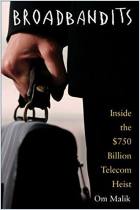
Article
How Wirecard Went From Tech Star to Bankrupt
Prosecutors are probing whether the electronic-payments giant used fictitious revenue to inflate its sales and fool investors; a missing $2 billion
The Wall Street Journal,
2020
Read or listen offline
Amazon Kindle
auto-generated audio
1×
Log in to listen to the audio summary.
auto-generated audio
Recommendation
Enron, Tyco and WorldCom: Now add to this list of massive corporate accounting frauds the name Wirecard, a global transaction and payment processor that on June 17, 2020, carried a market valuation of $14 billion but was declared insolvent a week later. The swift implosion arose from deceptive accounting practices and a $2 billion cash shortfall. In this compelling and detailed narrative, Wall Street Journal reporter Paul J. Davies explores Wirecard’s shadowy world.
Summary
About the Author
Paul J. Davies is a senior markets reporter for The Wall Street Journal in London.
Learners who read this summary also read
Book
Book























Comment on this summary